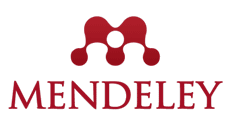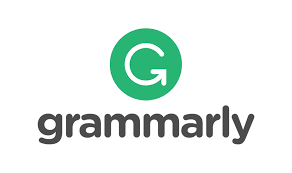A Comprehensive Analysis of Integrating TikTok for Enhancing EFL Students’ Speaking Skills
DOI:
https://doi.org/10.57176/jn.v3i2.98Keywords:
media, speaking, teaching speaking, thematic analysis, TikTokAbstract
Mastering speaking skills is crucial for students to effectively communicate and access necessary information. Effective communication is a fundamental aspect of education and life in general, enabling individuals to express themselves clearly, engage in meaningful interactions, and convey information accurately. The research aims to investigate why TikTok is chosen as a medium for teaching speaking and assess its impact on student's speaking abilities. We conducted qualitative research. Thematic analysis was used in this research. Eight participants were involved in the study. In collecting the data, semi-structured was employed. The present study found three main findings. The first is the desire to use TikTok as media in learning English speaking. The second is a realization of using TikTok as media in learning English speaking. Thirdly, the positive impact of using TikTok to enhance their confidence in learning English speaking. Therefore, students exhibited increased confidence and comfort in expressing themselves through the application. The enjoyable nature of TikTok, coupled with its popularity among young people, contributes to its effectiveness as an innovative tool for teaching speaking skills. A suggestive suggestion for further study is the applicability of similar social media tools in language education across diverse contexts and student populations. Understanding how different groups respond to such tools can provide a more comprehensive understanding of their effectiveness.
___________________________________________________________________________________________
Menguasai keterampilan berbicara sangat penting bagi siswa untuk berkomunikasi secara efektif dan mengakses informasi yang diperlukan. Komunikasi yang efektif merupakan aspek mendasar dalam pendidikan dan kehidupan secara umum, yang memungkinkan individu mengekspresikan diri dengan jelas, terlibat dalam interaksi yang bermakna, dan menyampaikan informasi secara akurat. Penelitian ini bertujuan untuk menyelidiki mengapa TikTok dipilih sebagai media pengajaran berbicara dan menilai dampaknya terhadap kemampuan berbicara siswa. Kami melakukan penelitian kualitatif. Analisis tematik digunakan dalam penelitian ini. Delapan peserta dilibatkan dalam penelitian ini. Dalam pengumpulan data digunakan metode semi terstruktur. Penelitian ini menemukan tiga temuan utama. Yang pertama adalah keinginan untuk menggunakan TikTok sebagai media dalam belajar berbicara bahasa Inggris. Yang kedua adalah realisasi penggunaan TikTok sebagai media dalam pembelajaran berbicara bahasa Inggris. Ketiga, dampak positif penggunaan TikTok untuk meningkatkan kepercayaan diri mereka dalam belajar berbicara bahasa Inggris. Oleh karena itu, siswa menunjukkan peningkatan kepercayaan diri dan kenyamanan dalam mengekspresikan diri melalui aplikasi. Sifat TikTok yang menyenangkan, ditambah dengan popularitasnya di kalangan anak muda, berkontribusi terhadap efektivitasnya sebagai alat inovatif untuk mengajarkan keterampilan berbicara. Saran yang disarankan untuk penelitian lebih lanjut adalah penerapan alat media sosial serupa dalam pendidikan bahasa di beragam konteks dan populasi siswa. Memahami bagaimana berbagai kelompok merespons alat-alat tersebut dapat memberikan pemahaman yang lebih komprehensif tentang efektivitas alat-alat tersebut.
References
Allen, R. E. S., & Wiles, J. L. (2016). A rose by any other name: Participants choosing research pseudonyms. Qualitative Research in Psychology, 13(2).
Braun, V., & Clarke, V. (2006). Using thematic analysis in psychology. Qualitative Research in Psychology, 3(2).
Byram, M. (2008). Teaching and learning language and culture. Multilingual Matters.
Constantinides, E. (2014). Foundations of Social Media Marketing. Social and Behavioral Sciences, 40–57.
Creswell, J. W. (2014). Research design: Qualitative, quantitative, and mixed methods approach. Sage Publication.
Devana, T., & Nurul, A. (2021). Enhancing Students’ Speaking Skill and Motivation Through Instagram Vlog. Sriwijaya University Learning and Education International Conference (SULE-IC 2020).
Ferstephanie, F. (2022). The Effect of Tiktok Platform To Develop Students’ Motivation in Speaking Ability: A Classroom Action Research. Wiralodra English Journal, 6(1).
Gunawardhana, L. K. P. D., & Palaniappan, S. (2016). Using Multimedia as an Education Tool. 9th Annual International Conference on Computer Games Multimedia & Allied Technologies (CGAT 2016).
Guo, P. J., Kim, J., & Rubin, R. (2014). How video production affects student engagement: An empirical study of MOOC videos. Scale Conference, Georgia, USA.
Hosni, S. A. (2014). Speaking Difficulties Encountered by Young EFL Learners. International Journal on Studies in English Language and Literature (IJSELL), 2(6).
Kayii, K., & Rowena, V. S. (2021). Technology in Teaching Speaking and Its Effects to Students Learning English. Journal of Language and Linguistic Studies, 17(2), 958–970.
Lisnawati, I. (2021). Speaking learning based on multimedia. Journal of Language and Linguistic Studies, 17(4), 2046–2056. https://doi.org/10.52462/jlls.147
Locher, M. A. (2010). Introduction: Politeness and impoliteness in computer-mediated communication. Journal of Politeness Research. Language, Behaviour, Culture, 6(1).
Maguire, M., & Delahunt, B. (2017). Doing a thematic analysis: A practical, step-by-step guide for learning and teaching scholars. All Ireland Journal of Teaching and Learning in Higher Education (AISHE-J), 8(3).
Maretha, A. L., & Anggoro, K. J. (2022). App Review TikTok: Benefits, Drawbacks, and Implications for the ELT Field. 46(2).
Mathew, N. G., & Alidmat, A. O. H. (2013). A study on the usefulness of audiovisual aids in EFL classroom: Implications for effective instruction. International Journal of Higher Education, 2(2).
Muslim, F. M. (2015). Speaking Skills of English Department Students Year 2013 in Public Speaking Class. Retain, 3(2).
Mykytiuk, S., Lysytska, O., Melnikova, T., & Mykytiuk, S. (2022). Facebook as a Flexible Ubiquitous Learning Space for Developing Speaking Skills. IAFOR Journal of Education, 10(1).
Nidaurrahmah, G. (2017). Using Whatsapp for Teaching Speaking in English. Ekp, 13(3).
Niyomsuk, S., & Polyiem, T. (2022). The Application of TikTok in Instructing Grade 7 Students’ Thai Traditional Dancing Art. Journal of Educational Issues, 8(1), 480. https://doi.org/10.5296/jei.v8i1.19800
Phillips, B. (2017). Student-Produced Podcasts in Language Learning – Exploring Student Perceptions of Podcast Activities. IAFOR Journal of Education, 5(3), 157–171.
Rao, P. S. (2019). The Importance of Speaking Skills in English Classrooms. Alford Council of International English & Literature Journal, 2(2).
Saed, H. A., Haider, A. S., Al-saman, S., & Hussein, R. F. (2021). The Use of YouTube in Developing the Speaking Skills of Jordanian EFL University Students. Heliyon, 7(7). https://doi.org/doi.org/10.1016/j.heliyon.2021.e07543
Simanungkalit, J. R. M., & Katemba, C. V. (2023). Utilizing English Tiktok as a Media in Learning English Vocabulary: University Students’ Perspective. Eduvelop: Journal of English Education and Development, 6(2).
Wang, K. (2021). Research on the Development of Innovation of Teacher Education in University under the Era of All Media. International Journal of Higher Education, 10(6).
Xiuwen, Z., & Razali, A. B. (2021). An Overview of the Utilization of TikTok to Improve Oral English Communication Competence among EFL Undergraduate Students. ,Universal Journal of Educational Research, 9(7).
Zhen, Z. (2016). The Use of Multimedia in English Teaching. US-China Foreign Language, 14(3), 182–189.
Downloads
Published
How to Cite
Issue
Section
License
Copyright (c) 2024 Shiddiq Asyrofi, Ning Setio Wati

This work is licensed under a Creative Commons Attribution-ShareAlike 4.0 International License.
You are free to:
- Share — copy and redistribute the material in any medium or format for any purpose, even commercially.
- Adapt — remix, transform, and build upon the material for any purpose, even commercially.
- The licensor cannot revoke these freedoms as long as you follow the license terms.
Under the following terms:
- Attribution — You must give appropriate credit , provide a link to the license, and indicate if changes were made . You may do so in any reasonable manner, but not in any way that suggests the licensor endorses you or your use.
- ShareAlike — If you remix, transform, or build upon the material, you must distribute your contributions under the same license as the original.
- No additional restrictions — You may not apply legal terms or technological measures that legally restrict others from doing anything the license permits.
Notices:
You do not have to comply with the license for elements of the material in the public domain or where your use is permitted by an applicable exception or limitation .
No warranties are given. The license may not give you all of the permissions necessary for your intended use. For example, other rights such as publicity, privacy, or moral rights may limit how you use the material.
















